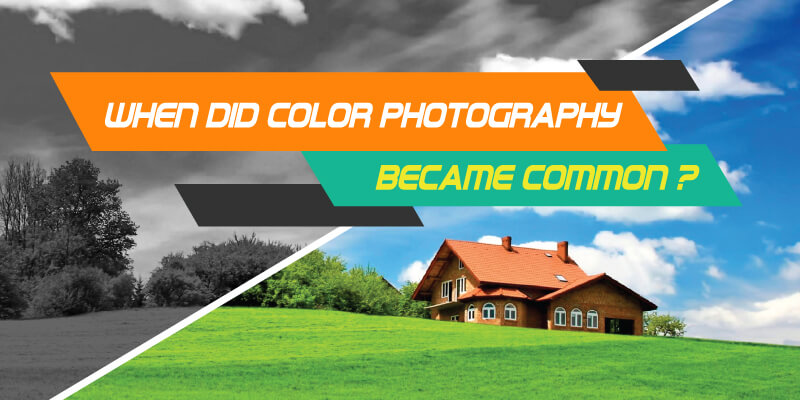
When Did Color Photography Became Common?
The photography we see today is a result of research, tried, and refused processes for centuries. Can you imagine this long journey? How it might have gone? Or when did color photography become common? Don’t take any pressure for yourself as I am going to answer these questions in this article well enough. All you need to do is just sit, read, and be amazed by the history of color photography.
Table of Contents
ToggleHistory of Color Photography: How it all starts
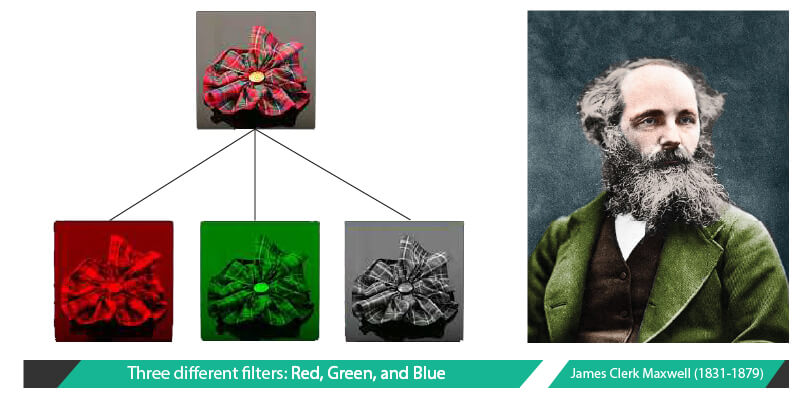
Though the color photography history starts from the 1840s it starts its domination over the black and white in the 1970s. So it took 130 years to get on the track but why? What were the difficulties? What obstacles the inventors have to overcome?
The early stage of the experiment was to find and produce a material that can observe the light and its color falling on it. At first, they tried the solar spectrum by projecting it directly onto a delicate surface. Despite the success being noticeable but the process that was required to complete it was complex. At that time cameras used to form dim images and because of that long-lasting exposure was needed sometimes it would require days that are next to impossible.
Let’s assume you do all that long process for a color image but the result was not worth it eventually. I mean the color that was produced was very limited. The color range and quality were very primary. The name of this process was “Hillotype” and it was invented by American daguerreotypist Levi Hill. Many others tried but eventually failed to get better results than HILL. This is considered the start of the era of color photography.
Hill’s method was kept hidden until 1856, he agreed to reveal it in a book that was only available on preorder then. After getting Hill’s secret recipe, photographers and associates tried out the process but it was so complicated that the result was nearly equal to zero. In 2007, after over a hundred-year research of the National Museum of America proved that Hill had actually found a way to produce color photos but the result was not that great as he claimed. He made his images more attractive using pigments
First Renowned Color Photography Process By Gabriel Lippmann
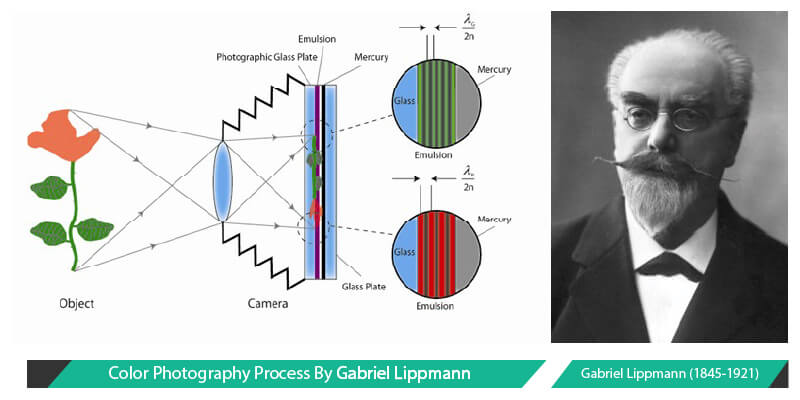
Gabriel Lippman was a physicist and an inventor who is the first person to develop the first color photograph that doesn’t need any pigments or dyes. Using his genius knowledge of physics he presented his invention by 1906 with few color photos of a parrot, a bowl of oranges, a group of flags, and a stained glass window. Later he was awarded the Nobel Prize for physics for his invention.
Lippman’s invention was groundbreaking for color photography but due to its complexity and expensiveness it wasn’t getting everyone’s attention and most people are still away from color photography.
Maxwell: The Unsung Hero Of Color Photography
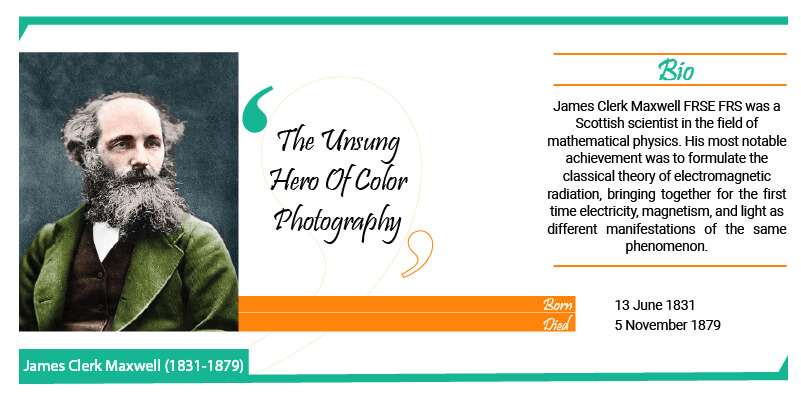
When everyone is praising Lippman for his invention and contribution in color photography, a Scottish physicist James Clerk Maxwell invented a theory to capture color photos. Due to Lippman’s success story, Maxwell’s invention didn’t get the attention it deserved until a German scientist named Hermann Wilhelm Vogel reexamined the theory in the 1890s.
In Maxwell’s theory, he proposed an idea of capturing photos on three different filters: red, green, and blue. After that when you playback the images with matching filters a complete color image will appear. Maxwell presented his idea by capturing the famous image of a tricolor ribbon at the “Royal Institution” in 1861.
After Vogel completed his reexamination of Maxwell’s theory he invented some kind of dyes that were only sensitive to particular colors. But the time it required was very high. Not only that you would have to capture the image with three different cameras which are impossible. Because you can’t keep your camera still every time and the scene you are capturing may not be the same in the middle of the shooting.
Different Versions Of Camera For Color Photography
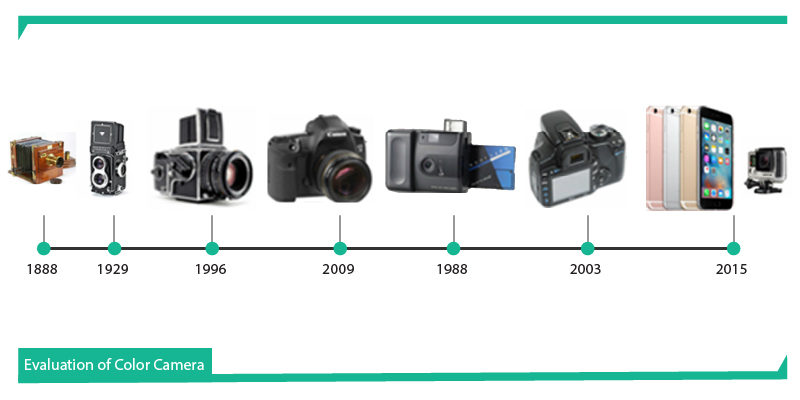
Based on Maxwell’s invention refined by Hermann Wilhelm Vogel, different versions of cameras were released to take advantage of the invention and to make it available for the photographers as well. The first version of the camera could differentiate the incoming light through three different filters. It is used to capture three photos at the same time.
The second version of the camera has fixed exposed photos and allows quick swap filters and emulsion types. Though this is not the easiest one, it still got populated among photographers in 1910.
Louis Ducos du Hauron: The Commercial Market Maker
Louis Ducos du Hauron is known as the pioneer of color photography. He was a french photographer, born in Langon, Gironde, and died in Agen, France. He invented the idea of using three filters at once with one top of another like a sandwich formation. Because of that, the process works at once in any ordinary camera. Hauron placed the blue filter first and behind that followed by green and red layers.
This idea was the game-changer for the color photography era though it has some setbacks as well. Since the layers were placed one after another and the light that creates photos supposed to pass through them. So the issue was when the light passes through the layers it seems to get dimmer layer by layer which creates a soft image.
The New Begining Of Color Photography
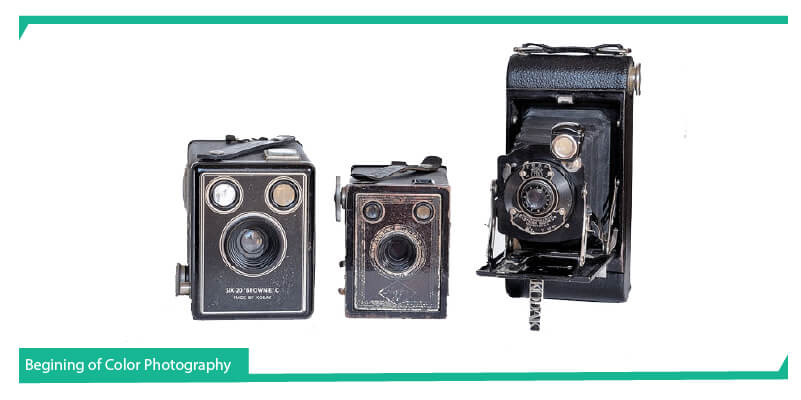
Though Hauron’s idea wasn’t perfect, it is the first method that was published for commercial use. An American company named “Agfa-Ansco ” was the first company that produced a roll type film called “Colorol ” in 1930. These films can be used with snapshot cameras then. But the real catch was that the photographers had to send back the negatives to Ansco for developing the photos. As the colorol was made by Ansco they only knew how to extract photos from them.
As the light became dim by passing through the layers the images also came out noisy and grainy. Today we have photoshop to fix grainy photos but back then we didn’t have that luxury. After a few years in 1935, the revolutionary company came into the action that is “Kodak”. I mean who doesn’t know Kodak, right? It was so popular back then and it ruled the film and photography industry without any competition with their groundbreaking creation known as “Kodachrome”.
Leopold Mannes and Leopold Godowsky Jr are the two musicians who originally researched and developed that tripack solution for color photography and later Kodak hired them for their Research Laboratories. These two geniuses have made the most appreciated film for Kodak. The idea of their invention was to use emulsions with three layers on a single base and this emulsion will capture the wavelengths of all three color gamuts ( red, green, and blue ).
In 1936, Agfa was able to reinvent Kodak’s development and was successful to develop all three layers at one time. In the 1960s all the film brands were popular in the color photography market. That time the price was so high that the use was limited and black and white photography was still a vastly used one. By the year of 1970s, all the prices went down and people started to buy and use them like the black and white technique used. Eventually in the 1980s, black and white were not on the driving seat anymore and color photography was exposed to all for use.
Who invented color photography?
Above I have talked in-depth about the inventors of color photography but here I will only mention their names. The first successful color photography was invented by Scottish physicist James Clerk Maxwell and Gabriel Lippman.
Why did photographers not usually use color photography before the 1970s?
Before the 1970s the process of color photography was very complex and the material that was needed to complete the process was expensive. After the 1970s it became relatively cheap and available for mass people.
What colors are good for pictures?
Color photos produced from three primary colors of green, red and blue. So the rich and deep form of these colors is the best for color photos. If you want to get a neutral look then gray is the best for you.
What background color is best for photography?
Different photoshoots require different background colors because without proper background the images look dull. But solid background color is known best for most of the types of photography. As for product photography, a solid white background is recommended strictly.
Final Thoughts
The journey of color photography becoming common was neither short nor easy. It’s like a mythological tale by itself where people from different eras participated and gave their valuable contribution to reach where we are now. The days of rolling films and developing images from negatives were gone and digital image processing took its place but history is worth remembering.
In 2010, the production of Kodachrome was stopped, and with that our long and adventurous history of analog photography is gone. Today everything is digital, images are made with pixels and you don’t need to carry big cameras as well.
That’s all for today. Hope you enjoyed the journey and got your answer, “when did color photography become common?” Till the next journey, I hope you guys stay safe and sound.

Navaho Mizsey
Author
“Navaho Mizsey is a Content Writer Executive with 5+ years of experience. He is a hardworking and talented writer. He writes what the audience wants to read. He completed his degree in journalism and started his career in content writing. He loves to write about photography, camera, and photographer”
Categories
- Image Guidelines (12)
- Post Production (8)
- Pre Production (27)
- Review (16)
- Tips (51)
- Tutorial (18)
Recent Posts
Quick Response
Email:
cs@theclippingpathservice.com
Hotline Support:
Mobile: +1 (718) 717-2362


No Comments